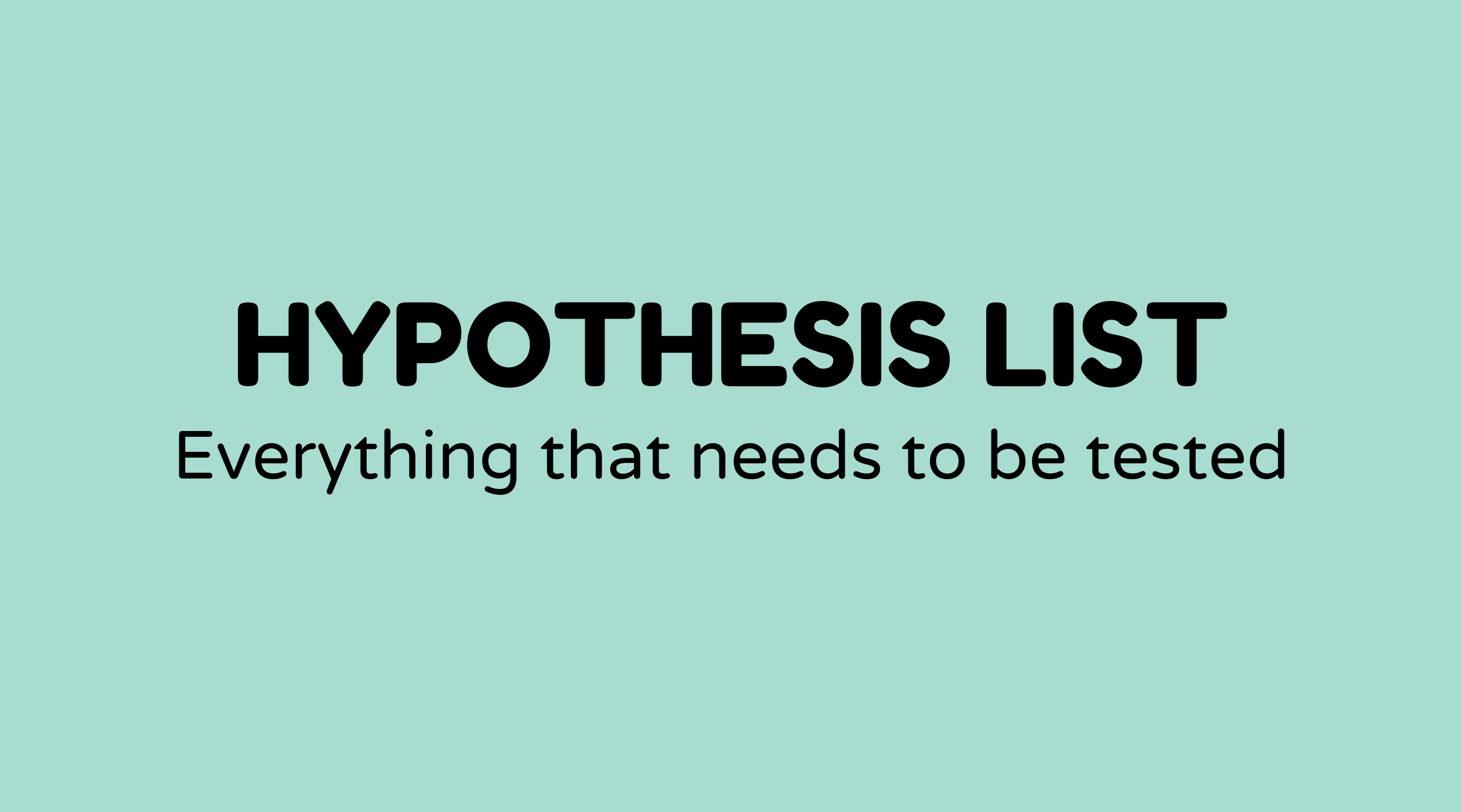Hypothesis list

Overview of Hypothesis List:
When you’re engaged in the product development process, a hypothesis list can prove to be exceptionally valuable. It serves as a means to organize and prioritize your assumptions, allowing for a systematic approach to innovation. A well-structured hypothesis list helps you keep track of all the assumptions made during product design and testing, providing clarity and focus.
Why a Hypothesis List Matters:
Understanding the importance of a hypothesis list is straightforward. It plays a vital role in guiding decisions and reducing uncertainties in product development. By clearly outlining your hypotheses, you can plan experiments to confirm or refute your assumptions, thus saving both time and resources. This, in turn, enhances your decision-making and leads to a more efficient development process.
What is a Hypothesis List?
A hypothesis list serves as a detailed inventory of assumptions regarding your product, its features, user behaviors, and market requirements. Each entry in the list is examined for its validity. This compilation acts as the foundation of your product testing strategy, helping you decide what to test first based on potential impact and uncertainty.
How do you Create a Hypothesis List?
Creating a hypothesis list is easier than it may seem. Follow these steps:
-
Identify Key Assumptions: Begin by documenting all assumptions concerning your product and its market. This can encompass customer needs, product functionality, and user behaviors.
-
Prioritize Assumptions: Use criteria such as potential impact and degree of uncertainty to rank your list.
-
Formulate Testable Hypotheses: Transform your assumptions into testable statements. For example, “Users will find our app’s interface easy to navigate.”
-
Design Experiments: Plan ways to evaluate each hypothesis, which may involve user testing, surveys, or prototypes.
-
Track Results: Document test outcomes and refine your product based on these insights.
Examples of a Hypothesis List:
- Assumption: Users prefer mobile interfaces.
- Hypothesis: 70% of users will engage more on the app than the desktop site.
- Assumption: Automatic updates enhance customer retention.
- Hypothesis: Customers who receive automatic updates are 25% more likely to continue using the product.
FAQs:
-
What makes a good hypothesis?
- A good hypothesis is clear, concise, and testable. It should include a prediction and be measurable.
-
How often should I update the hypothesis list?
- Regularly updating the list after tests or notable product changes is essential for maintaining relevance.
-
Is a hypothesis list only for product development?
- While it’s essential for product development, a hypothesis list can also be useful in marketing, user experience design, and strategic planning.
-
Can a hypothesis list be too long?
- Yes, it’s important to prioritize hypotheses to avoid becoming overwhelmed. Focus on quality rather than quantity.
-
What tools can help manage a hypothesis list?
- Tools like Trello, Notion, or Excel can effectively assist in organizing and tracking hypotheses.
-
Is a hypothesis always proved true?
- Not necessarily. A hypothesis can be validated or invalidated. Both results offer valuable insights.



